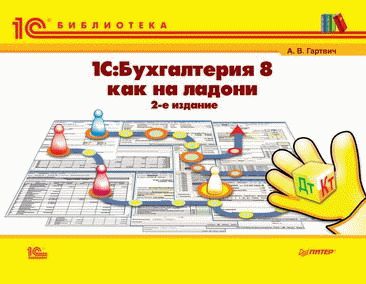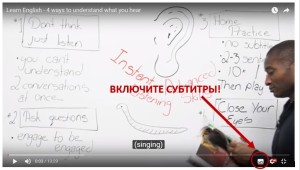СОДЕРЖАНИЕ
- 1 IELTS Reading Test Samples
- 2 IELTS Academic Reading
- 3 IELTS General Reading
- 4 IELTS Тест PDF
- 5 Пробные тесты IELTS онлайн
- 6 IELTS practice tests
- 7 Пробные тесты IELTS онлайн IELTS practice tests
- 8 IELTS Practice Test Volume 2
- 9 Share this test
- 10 Are you sure you want to exit?
- 11 Are you sure you want to view the solution now?
- 12 Review your answers
- 13 Time is up
- 14 Are you sure you want to submit?
- 15 Reading Passage 1
- 16 It’s Dynamite
- 17 Reading Passage 2
- 18 Single-Gender Education: A Case Made?
- 19 Reading Passage 3
- 20 The Mother of All Languages
- 21 IELTS Practice Tests Plus Volume 2
- 22 Share this test
- 23 Are you sure you want to exit?
- 24 Are you sure you want to view the solution now?
- 25 Review your answers
- 26 Time is up
- 27 Are you sure you want to submit?
- 28 Reading Passage 1
- 29 Snow-makers
- 30 Reading Passage 2
- 31 Why are so few tigers man-eaters?
- 32 Reading Passage 3
- 33 Keep taking the tablets
- 34 IELTS Practice Tests Plus Volume 1
- 35 Share this test
- 36 Are you sure you want to exit?
- 37 Are you sure you want to view the solution now?
- 38 Review your answers
- 39 Time is up
- 40 Are you sure you want to submit?
- 41 READING PASSAGE 1
- 42 Tackling Obesity in the Western World
- 43 Reading Passage 2
- 44 Wheel of Fortune
- 45 Reading Passage 3
IELTS Reading Test Samples
Here you can find full IELTS Reading Test Samples (both General and Academic) for IELTS reading practice. All tests are constantly being renewed and correspond to the real exam sections.
To get your IELTS Reading score calculated, just follow this procedure:
- Choose one of the practice tests below and click on the first section of it.
- Read the text and answer the questions. Then press «check» and you will see the correct and wrong answers, and get your result.
- Now you can go on to the next section and do the same.
- After you finish the third section, press «Get result!».
IELTS Academic Reading
IELTS Academic Reading test 1 (40 questions)
IELTS Academic Reading test 2 (40 questions)
IELTS Academic Reading test 3 (40 questions)
IELTS Academic Reading test 4 (40 questions)
IELTS Academic Reading test 5 (40 questions)
IELTS Academic Reading test 6 (40 questions)
IELTS Academic Reading test 7 (40 questions)
IELTS Academic Reading test 8 (40 questions)
IELTS Academic Reading test 9 (40 questions)
IELTS Academic Reading test 10 (40 questions)
IELTS Academic Reading test 11 (40 questions)
IELTS General Reading
IELTS General Reading test 1 (40 questions)
IELTS General Reading test 2 (40 questions)

IELTS Тест PDF
Если вы хотите потренироваться перед экзаменом и вам нужен IELTS тест, то вот он, ждёт вас здесь (см.файлы ниже).
Если вы только начинаете подготовку и не знаете свой уровень и какой балл по IELTS можете получить прямо сейчас, этот тест тоже вас ждёт.
Выполнив эти задания вы прочувствуете формат экзамена и узнаете сколько у вас правильных ответов, т.е сможете посмотреть какой у вас балл.
Это Официальный IELTS тест от Cambridge!
Эффективнее всего выполнять тест так:
- Listening — 30 мин + 10 мин переписать ответы в экзаменационный бланк
- Reading—60 мин
- Writing — 60 минут / 2 задания
ПРОВЕРЯЙТЕ ПОТОМ СВОИ ОТВЕТЫ!
Важно, чтобы ваш writing проверил спец по IELTS!
Если сдаёте IELTS на бумаге, то лучше распечатать тест и сделать всё как на экзамене — на бумаге. Если сдаёте на компьютере (Computer-based IELTS), то делать тест нужно на компьютере, чтобы привыкнуть к формату и знать что там к чему. На сайтах официальных источников есть пробные задания.
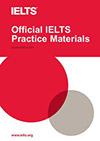
Listening Test Recordings — Скачать (.pdf) (Записи в архиве .rar)
Пробные тесты IELTS онлайн
IELTS practice tests
| Practice Test 1 | |||
 |
 |
 |
 |
| Section 1 | Section 1 | Writing Task | Speaking Task |
| Section 2 | Section 2 | ||
| Section 3 | Section 3 | ||
| Section 4 | |||
ЭФФЕКТИВНЫХ ВАМ ТРЕНИРОВОК И БОЛЬШЕ БАЛЛОВ!
Поделиться или сохранить себе

Пробные тесты IELTS онлайн
IELTS practice tests
| Practice Test 1 | |||
 |
 |
 |
 |
| Section 1 | Section 1 | Writing Task | Speaking Task |
| Section 2 | Section 2 | ||
| Section 3 | Section 3 | ||
| Section 4 | |||
Поделиться или сохранить себе
Наше уютное сообщество ВК



— Самостоятельная подготовка к экзамену IELTS
— Хитрости и трюки для успешной сдачи IELTS теста.
— Скачать материалы и учебники для отработки модулей Writing, Speaking, Listening, Reading

IELTS Practice Test Volume 2
Reading Practice Test 1
Are you sure you want to exit?
Are you sure you want to view the solution now?
*This action will NOT submit your test and your answers will be LOST
Review your answers
Time is up
Please choose the following option
Are you sure you want to submit?
Reading Passage 1
You should spend about 20 minutes on Questions 1-13, which are based on Reading Passage One.

It’s Dynamite
In 1866, an American railroad company was constructing a tunnel through the Sierra Nevada mountains. They encountered particularly hard rock, and ordered three crates of the only blasting explosive that could do the job: nitroglycerine. The first of these crates arrived in a postal centre in San Francisco, and upon being accidentally dropped, promptly exploded, killing all 15 people present. The point was taken. ‘Nitro’ was dangerously shock sensitive. Its transportation was soon banned, and from then on, it had to be manufactured by on-site laboratories — an expensive and still quite dangerous task, as the number of deadly explosions would demonstrate.
The history of nitroglycerine is full of such sad events. It was first synthesised in 1847 by Ascanio Sobrero, an Italian chemist, and he was so frightened by his discovery that he did not immediately publish his findings. He was also the first to caution the world against its use, in both private letters and a journal article, arguing that it was impossible to handle the substance safely. However, it was soon discovered that when frozen (at about five degress), nitro was much less sensitive to shock. The problem was then in thawing it back into liquid form, at which point it became even more unstable. Again, a mounting death toll would testify to this fact.
Yet nitroglycerine always remained in demand, being the first practical mining explosive produced. Prior to this, gunpowder was used, but this was limited and clumsy. Gupowder is a ‘low’ explosive, meaning that it ‘burns’ from layer to layer, producing gases which expand at less than the speed of sound. Nitro is a ‘high’ explosive, meaning that it ‘detonates’ — that is, is triggered to react by the virtually instrantancous shock wave, producing gases which expand at more than the speed of sound. Gunpowder could not efficiently shatter rock (although it was suitable for bullets and artillery shells). Only nitro could really do the job, and a Swedish chemist, Alfred Nobel, became interested.
Nobel’s companies were moving from primarily iron and steel production to the almost exclusive manufacture of cannons, armaments, and gunpowder, and he saw the commercial value in making nitroglycerine manageable. He began experimenting — at considerable cost. In 1864, his younger brother and several workers were killed in a factory explosion. Undererred, Nobel built a new factory in the remote hills of Germany, determined to find the answer. He first tried combining nitro with conventional gunpowder, marketing the final product as ‘blasting oil’, yet accidental explosions continued. His factory was destroyed yet again, on two occasions!
The breakthrough finally came when Nobel’s company mixed liquid nitroglycerine with an inert absorbent silicate sand, known as ‘diatomaccous earth’. This was produced by grinding down diatomite, a rock found around the local hills. It is similar to volcanic pumice, being very light and highly porous, yet it is actually the fossilised remains of diatoms, a hard-shelled alga. This combination immediately made nitro less dangerous to handle, and by being solid, more convenient to package and transport. Nobel patented his invention in 1867 under the name of ‘dynamite’, based on ‘dyna’ the Greek word for ‘power’.
In its best-known form, dynamite was made in short paper-wrapped sticks consisting of three quarters intro to one quarter diatomaccous earth, but it would always remain dangerous to manufacture, store, and use. Over time, the nitro can seep out, crystallising on the outside of the sticks or pooling at the bottom of storage boxes, with all the consequent instability that raw nitro possesses. Nevertheless, in an age of extensive railroad and tunnel construction, the product would earn Nobel a great fortune. Yet, while high explosives serve a commendable purpose in peacetime engineering projects, Nobel’s fortune was also based on weapons of death and destruction, and the public knew it.
Nobel himself was to become greatly perturbed, especially given the events which occurred when his brother Ludvig died. The French newspapers mistakenly thought it was the death of Alfred himself, and published an obituary. Alfred happened to be in France at the time, and one can only wonder at his reaction upon reading about his own death! Yet the obituary was harsh and condemning, calling Nobel the ‘merchant of death’, someone who ‘became rich by finding ways to kill more people faster than ever before’. It was certainly this event which influenced him, in 1895, to write a new last will and testament, one year before he died. It would astonish everyone, and change the course of history.
When Alfred Nobel died, single and childless, at age 63, he specified that, apart from some minor bequests, his vast fortune (about 200 million dollars in today’s money) be set aside for the establishment of the Nobel Prizes. These would be awarded annually for those who confer the ‘greatest benefit on mankind’ in physics, chemistry, peace, medicine, and literature. Nobel’s strategy worked, as the Nobel Prizes are now considered among the most prestigious in the world. Few consider that all that money comes from nitroglycerine, dynamite, gunpowder, and armament manufacture, the indirect cause of incalculable human carnage.
Reading Passage 2
You should spend about 20 minutes on Questions 14-26, which are based on Reading Passage Two.

Single-Gender Education: A Case Made?
A. All modern democracies, instilled as they are with the ethics of freedom and equality of the sexes, nevertheless offer the option of single-sex education. This separates the genders into their own classrooms, buildings, and often schools. Traditionally, women had to fight hard and long to achieve equal opportunities in education, and the single-gender controversy is mostly in relation to them. The question is whether this educational system advances or retards their cause, and there are supporters on both sides, each convinced that the case is made.
B. Given that the word ‘segregation’ has such negative connotations, the current interest in single-gender schooling is somewhat surprising. In the same way that a progressive society would never consider segregation on the basis of skin colour, income, or age, it seems innately wrong to do this on gender. Yet in the real world and the society in which we live, segregation of some sort happens all the time. Clubs inevitably form — for example, of clerical workers, of lawyers, of the academically gifted, and of those skilled in music or the arts. Exclusionary cliques, classes, and in-groups, are all part of everyday life. Thus, it may simply be an idealistic illusion to condemn single-gender settings on that basis alone, as do many co-educational advocates.
C. This suggests that single-gender education must necessarily be condemned on other grounds, yet the issue is complicated, and research often sinks into a morass of conflicting data. and. occasionally, emotional argument. Thus, one study comes out with strong proof of the efficacy of single-gender schooling, causing a resurgence of interest and positive public sentiment, only to be later met with a harshly-titled article. ‘Single-Sex Schooling: The Myth and the Pseudoscience’, published and endorsed by several respected magazines. Similarly, the arguments on both sides have apparent validity and often accord, on the surface at least, with common sense and personal observation. What then can parents do?
D. Proponents of separating the genders often argue that it promotes better educational results, not only in raw academic scores but also behaviour. The standard support for this is the claim of innate gender differences in the manner in which boys and girls learn and behave in educational settings. Separation allows males to be taught in a ‘male way’ and in accordance with the ‘male’ developmental path, which is said to be very different to the female one. Such claims demand hard evidence, but this is difficult to come by. since statistics are notoriously unreliable and subject to varying interpretations.
E. Of course, one of the key factors’that leads to superior performance at single-gender schools is often the higher quality of the teachers, the better resources at hand, and the more motivated students, often coming as they do from wealthier or more privileged backgrounds. Single-gender schools are often the most prestigious in society, demanding the highest entry marks from their new students, who, in turn, receive more deference and respect from society. When taking these factors into account, large-scale studies, as well as the latest findings of neuroscientists, do not support the claims of superior results or persistent gender differences, respectively. Those who make such claims are accused of emphasising favourable data, and drawing conclusions based more on anecdotal evidence and gender stereotyping.
F. Yet the single-sex educationalists come out with other positives. One of the most common is that girls are free from the worry of sexual harassment or negative behaviour originating from the presence of boys. Girls are said to develop greater self-confidence, and a preparedness to study subjects, such as engineering and mathematics, which were once the exclusive province of males. Conversely, boys can express a greater interest in the arts, without the possible jibe, ‘That’s a girls’ subject’. But logically, one senses such stereotyping could equally come in single-gender settings, since it is the society outside of school, with all its related expectations, which has the greatest influence.
G. Among this welter of conflicting argument, one can, at least, fall back on one certainty — that the real world is co-gendered, and each side often misunderstands the other. Supporters of co-education argue that positive and co-operative interaction between the genders at school reduces such divisions by de-emphasising gender as a factor of concern. In theory, stereotypes are broken down, and inclusion is emphasised, providing benefits for society as a whole. But such sentiments, admittedly, do sound as if we are retreating into self-promotional propaganda. In other words, these statements are just glib and unreal assertions, rather than a reflection of what actually happens in the co-educational classroom.
H. The key point is whether the interaction in co-educational settings is indeed positive and co-operative. Some would say it could equally be the opposite, and surely it must occasionally be so (if we abandon the rosy picture painted in the previous paragraph). But I would say that that interaction, whether good or bad, whether academically enhancing or retarding, still constitutes education, and of a vital nature. It presents exactly the same subset of challenges that students, male or female, will ultimately have to deal with in the real world. This is the most important point, and would determine my choice regarding in which educational setting I would place my children.
Reading Passage 3
You should spend about 20 minutes on Questions 27-40, which are based on Reading Passage Three.
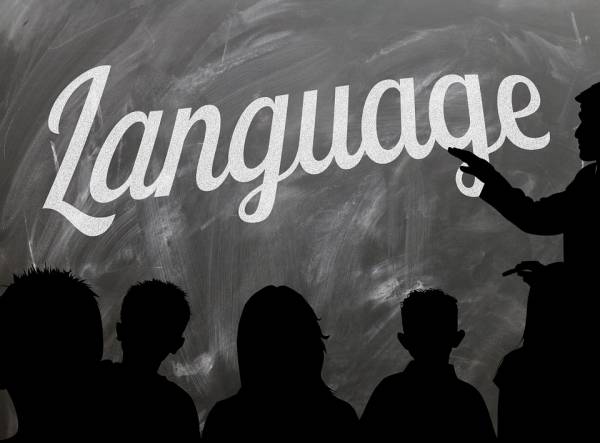
The Mother of All Languages
In 1786, William Jones, a British judge stationed in India, made what must be ranked as one of the most amazing discoveries of all time, yet it is little known outside of linguistic circles. Jones was studying Sanskrit, a long dead Indian language only used in classic or liturgical texts. Upon examining many of the words, he was struck by their similarity to the two most ancient languages known at that time: Greek and Latin. He would later write that Sanskrit has ‘a stronger affinity’ with these other languages ‘than could possibly have been produced by accident’.
Jones drew the conclusion that Greek and Latin, and even the Germanic languages (including English), were all related to Sanskrit, and thus, logically, all of them must necessarily have evolved from a single earlier language. Subsequent scholars were able to confirm this, adding to this linguistic family all of the Romance languages (French, Spanish, and others), Slavic languages (Russian, Czech, and many others), and Indo-lranian (Persian, Afghan, and many others). There are, in fact, hundreds of languages and dialects all over Europe, Iran, and South Asia, which can now trace their ancestry to an original Indo-European language, now called Proto-Indo-European, or PIE for short.
According to linguistic theory, proto-languages are usually spoken over relatively limited geographical areas, over a short time span, and by a tightly-knit community. The implication is simple, but also stunning that some single ancient tribe which spoke this mother of languages eventually took over most of the middle and western Eurasian landmass, spreading their language with them. This subsequently evolved into many others over the course of time, creating a language family which now has the greatest number of speakers in the world. The big question concerns who these Proto-Indo-Europeans were, and where their ancestral homeland lay.
Archaeologists have examined many sites of European prehistory, occasionally identifying these as the homeland of the PIE population. This is often done with nationalistic overtones, raising the anger of others in this field, and there still remains controversy over each claim. It is linguistic evidence which provides, perhaps, more definite clues. The similarities in vocabulary between all PIE’s daughter languages have allowed linguists to deduce a probable grammar and fairly extensive vocabulary. It is irresistible not to read into this a tentative lifestyle and location, with the quaint proviso that it remains ‘at best, highly speculative’.
Looking at just one example, there are PIE words for the temperate trees of the Northern Hemisphere, but not tropical or Mediterranean varieties. This indicates a northern European location, with a cold climate. And so, with such detailed linguistic analysis, the most widely accepted theory places the PIE origin in the Caspian Steppe — a vast region of temperate grass and shrub-land north of the Black Sea, across present-day Ukraine, Southern Russia, and Kazakhstan. Their language was spoken around 4000 BC (plus or minus a millennium, since exact dates are impossible at such an early stage in European pre-history).
What then enabled this single tribe to advance outwards and take over Eurasia? Some geneticists have suggested that it was the domestication of the horse, perhaps giving that tribe a thitherto unheard-of military superiority (as would the Huns and the Mongols possess many thousands of years later). Some of them have also suggested that the discovery of farming was the impetus of this tribe’s advance, as with a stable and steady food supply at hand, their numbers could increase at the expense of the other fragmented hunter-gathering tribes roaming the wilds of Eurasia. Perhaps then, PIE simply moved alongside the outward wave of the implementation of agriculture, together with a rapidly expanding and interbreeding population.
But even PIE must have evolved from some earlier language, and audacious linguists are digging deeper into the past. PIE gave birth to a large family of languages, but there exists other families, such as Afro-Asiatic (which includes Arabic), Dravidian (comprising the many languages of Southern India), and Altaic (which includes Mongolian and Japanese). It has been proposed that these themselves may all belong to a ‘macro-family’, sometimes called Proto-Nostratic. Most linguists maintain that, although it is theoretically possible that such an original language existed, it is next to impossible to prove, since resemblances among languages can also be due to chance, and thus they remain skeptical over such a claim.
Still, the implications are mind-boggling that perhaps almost every single language on Earth can ultimately be traced back to a single source possessed by a small group of individuals. This language is sometimes called Proto-Human, the mother of all languages. One interesting theory posited by geologists is that a huge catastrophe occurred in the not-so-distant past some 70,000 years ago, linked to the volcanic eruption of Mount Toba in Indonesia. This reduced the world population to a small band of survivors, and theirs is the Proto-Human from which all languages subsequently evolved. If this is true, it is intriguing to think that had that catastrophe not occurred, we would all be speaking totally different languages today.
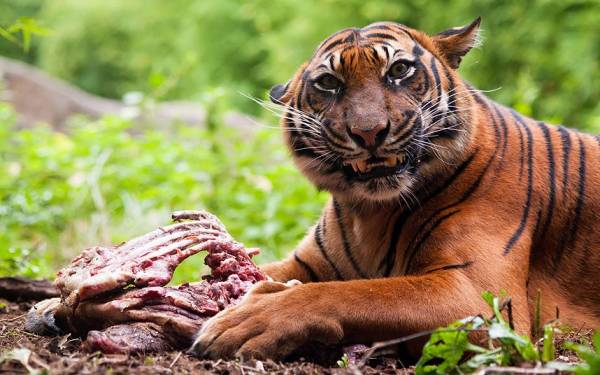
IELTS Practice Tests Plus Volume 2
Reading Practice Test 1
Are you sure you want to exit?
Are you sure you want to view the solution now?
*This action will NOT submit your test and your answers will be LOST
Review your answers
Time is up
Please choose the following option
Are you sure you want to submit?
Reading Passage 1
You should spend about 20 minutes on Questions 1-13, which are based on Reading Passage 1 below.

Snow-makers
Skiing is big business nowadays. But what can ski resort owners do if the snow doesn’t come?
A In the early to mid twentieth century, with the growing popularity of skiing, ski slopes became extremely profitable businesses. But ski resort owners were completely dependent on the weather: if it didn’t snow, or didn’t snow enough, they had to close everything down. Fortunately, a device called the snow gun can now provide snow whenever it is needed. These days such machines are standard equipment in the vast majority of ski resorts around the world, making it possible for many resorts to stay open for months or more a year.
B Snow formed by natural weather systems comes from water vapour in the atmosphere. The water vapour condenses into droplets, forming clouds. If the temperature is sufficiently low, the water droplets freeze into tiny ice crystals. More water particles then condense onto the crystal and join with it to form a snowflake. As the snow flake grows heavier, it falls towards the Earth.
C The snow gun works very differently from a natural weather system, but it accomplishes exactly the same thing. The device basically works by combining water and air. Two different hoses are attached to the gun. one leading from a water pumping station which pumps water up from a lake or reservoir, and the other leading from an air compressor. When the compressed air passes through the hose into the gun. it atomises the water — that is, it disrupts the stream so that the water splits up into tiny droplets. The droplets are then blown out of the gun and if the outside temperature is below 0°C, ice crystals will form, and will then make snowflakes in the same way as natural snow.
D Snow-makers often talk about dry snow and wet snow. Dry snow has a relatively low amount of water, so it is very light and powdery. This type of snow is excellent for skiing because skis glide over it easily without getting stuck in wet slush. One of the advantages of using a snow-maker is that this powdery snow can be produced to give the ski slopes a level surface. However, on slopes which receive heavy use, resort owners also use denser, wet snow underneath the dry snow. Many resorts build up the snow depth this way once or twice a year, and then regularly coat the trails with a layer of dry snow throughout the winter.
E The wetness of snow is dependent on the temperature and humidity outside, as well as the size of the water droplets launched by the gun. Snow-makers have to adjust the proportions of water and air in their snow guns to get the perfect snow consistency for the outdoor weather conditions. Many ski slopes now do this with a central computer system that is connected to weather-reading stations all over the slope.
F But man-made snow makes heavy demands on the environment. It takes about 275,000 litres of water to create a blanket of snow covering a 60×60 metre area. Most resorts pump water from one or more reservoirs located in low-lying areas. The run-off water from the slopes feeds back into these reservoirs, so the resort can actually use the same water over and over again. However, considerable amounts of energy are needed to run the large air-compressing pumps, and the diesel engines which run them also cause air pollution.
G Because of the expense of making snow, ski resorts have to balance the cost of running the machines with the benefits of extending the ski season, making sure they only make snow when it is really needed and when it will bring the maximum amount of profit in return for the investment. But man-made snow has a number of other uses as well. A layer of snow keeps a lot of the Earth’s heat from escaping into the atmosphere, so farmers often use man-made snow to provide insulation for winter crops. Snow-making machines have played a big part in many movie productions. Movie producers often take several months to shoot scenes that cover just a few days. If the movie takes place in a snowy setting, the set decorators have to get the right amount of snow for each day of shooting either by adding man-made snow or melting natural snow. And another important application of man-made snow is its use in the tests that aircraft must undergo in order to ensure that they can function safely in extreme conditions.
Reading Passage 2
You should spend about 20 minutes on Questions 14-26, which are based on Reading Passage 2 below:

Why are so few tigers man-eaters?
A. As you leave the Bandhavgarh National Park in central India, there is a notice which shows a huge, placid tiger. The notice says, ‘You may not have seen me, but I have seen you.’ There are more than a billion people In India and Indian tigers probably see humans every single day of their lives. Tigers can and do kill almost everything they meet in the jungle, they will kill even attack elephants and rhino. Surely, then, it is a little strange that attacks on humans are not more frequent.
B. Some people might argue that these attacks were in fact common in the past. British writers of adventure stories, such as Jim Corbett, gave the impression that village life in India in the early years of the twentieth century involved a stage of constant siege by man-eating tigers. But they may have overstated the terror spread by tigers. There were also far more tigers around in those days (probably 60.000 in the subcontinent compared to just 3000 today). So in proportion, attacks appear to have been as rare then as they are today.
C. It is widely assumed that the constraint is fear; but what exactly are tigers afraid of? Can they really know that we may be even better armed than they are? Surely not. Has the species programmed the experiences of all tigers with humans its genes to be inherited as instinct? Perhaps. But I think the explanation may be more simple and, in a way, more intriguing.
D. Since the growth of ethology in the 1950s. we have tried to understand animal behaviour from the animal’s point of view. Until the first elegant experiments by pioneers in the field such as Konrad Lorenz, naturalists wrote about animals as if they were slightly less intelligent humans. Jim Corbett’s breathless accounts of his duels with a an-eaters in truth tell us more about Jim Corbett than they do about the animals. The principle of ethology, on the other hand, requires us to attempt to think in the same way as the animal we are studying thinks, and to observe every tiny detail of its behaviour without imposing our own human significances on its actions.
E. I suspect that a tiger’s afraid of humans lies not in some preprogramed ancestral logic but in the way he actually perceives us visually. If you think like a tiger, a human in a car might appear just to be a part of the car, and because tigers don’t eat cars the human is safe-unless the car is menacing the tiger or its cubs, in which case a brave or enraged tiger may charge. A human on foot is a different sort of puzzle. Imagine a tiger sees a man who is 1.8m tall. A tiger is less than 1m tall but they may be up to 3m long from head to tail. So when a tiger sees the man face on, it might not be unreasonable for him to assume that the man is 6m long. If he meet a deer of this size, he might attack the animal by leaping on its back, but when he looks behind the mind he can’t see a back. From the front the man is huge, but looked at from the side he all but disappears. This must be very disconcerting. A hunter has to be confident that it can tackle its prey, and no one is confident when they are disconcerted. This is especially true of a solitary hunter such as the tiger and may explain why lions-particularly young lionesses who tend to encourage one another to take risks are more dangerous than tigers.
F. If the theory that a tiger is disconcerted to find that a standing human is both very big and yet somehow invisible is correct, the opposite should be true of a squatting human. A squatting human is half he size and presents twice the spread of back, and more closely resembles a medium-sized deer. If tigers were simply frightened of all humans, then a squatting person would be no more attractive as a target than a standing one. This, however appears not to be the case. Many incidents of attacks on people involving villagers squatting or bending over to cut grass for fodder or building material.
G. The fact that humans stand upright may therefore not just be something that distinguishes them from nearly all other species, but also a factor that helped them to survive in a dangerous and unpredictable environment.
Ethology = the branch of zoology that studies the behaviour of animals in their natural habitats
Reading Passage 3
You should spend about 20 minutes on Questions 27-40, which are based on Reading Passage 3 below.

Keep taking the tablets
The history of aspirin is a product of a rollercoaster ride through time, of accidental discoveries, intuitive reasoning and intense corporate rivalry.
In the opening pages of Aspirin: The Remarkable Story of a Wonder Drug, Diarmuid Jeffreys describes this little white pill as ‘one of the most amazing creations in medical history, a drug so astonishingly versatile that it can relieve headache, ease your aching limbs, lower your temperature and treat some of the deadliest human diseases’.
Its properties have been known for thousands of years. Ancient Egyptian physicians used extracts from the willow tree as an analgesic, or pain killer. Centuries later the Greek physician Hippocrates recommended the bark of the willow tree as a remedy for the pains of childbirth and as a fever reducer. But it wasn’t until the eighteenth and nineteenth centuries that salicylates the chemical found in the willow tree became the subject of serious scientific investigation. The race was on to identify the active ingredient and to replicate it synthetically. At the end of the nineteenth century a German company, Friedrich Bayer & Co. succeeded in creating a relatively safe and very effective chemical compound, acetylsalicylic acid, which was renamed aspirin.
The late nineteenth century was a fertile period for experimentation, partly because of the hunger among scientists to answer some of the great scientific questions, but also because those questions were within their means to answer. One scientist in a laboratory with some chemicals and a test tube could make significant breakthroughs whereas today, in order to map the human genome for instance, one needs ‘an army of researchers, a bank of computers and millions and millions of dollars’.
But an understanding of the nature of science and scientific inquiry is not enough on its own to explain how society innovates. In the nineteenth century, scientific advance was closely linked to the industrial revolution. This was a period when people frequently had the means, motive and determination to take an idea and turn it into reality. In the case of aspirin that happened piecemeal — a series of minor, often unrelated advances, fertilised by the century’s broader economic, medical and scientific developments, that led to one big final breakthrough.
The link between big money and pharmaceutical innovation is also a significant one. Aspirin is continued shelf life was ensured because for the first 70 years of its life, huge amounts of money were put into promoting it as an ordinary everyday analgesic. In the 1070s other analgesics, such as ibuprofen and paracetamol, were entering the market, and the pharmaceutical companies then focused on publicising these new drugs. But just at the same time, discoveries were made regarding the beneficial role of aspirin in preventing heart attacks, strokes and other afflictions. Had it not been for these findings, this pharmaceutical marvel may well have disappeared.
So the relationship between big money and drugs is an odd one. Commercial markets are necessary for developing new products and ensuring that they remain around long enough for scientists to carry out research on them. But the commercial markets are just as likely to kill off’ certain products when something more attractive comes along. In the case of aspirin, a potential ‘wonder drug* was around for over 70 years without anybody investigating the way in which it achieved its effects, because they were making more than enough money out of it as it was. If ibuprofen or paracetamol had entered the market just a decade earlier, aspirin might then not be here today. It would be just another forgotten drug that people hadn’t bothered to explore.
None of the recent discoveries of aspirin’s benefits were made by the big pharmaceutical companies; they were made by scientists working in the public sector. ‘The reason for that is very simple and straightforward,’ Jeffreys says in his book. ‘Drug companies will only pursue research that is going to deliver financial benefits. There’s no profit in aspirin any more. It is incredibly inexpensive with tiny profit margins and it has no patent any more, so anyone can produce it.’ In fact, there’s almost a disincentive for drug companies to further boost the drug, he argues, as it could possibly put them out of business by stopping them from selling their more expensive brands.
So what is the solution to a lack of commercial interest in further exploring the therapeutic benefits of aspirin? More public money going into clinical trials, says Jeffreys. ‘If I were the Department of Health. I would say “this is a very inexpensive drug. There may be a lot of other things we could do with it.» We should put a lot more money into trying to find out.’
Jeffreys’ book which not only tells the tale of a ‘wonder drug’ but also explores the nature of innovation and the role of big business, public money and regulation reminds us why such research is so important.

IELTS Practice Tests Plus Volume 1
Reading Practice Test 2
Are you sure you want to exit?
Are you sure you want to view the solution now?
*This action will NOT submit your test and your answers will be LOST
Review your answers
Time is up
Please choose the following option
Are you sure you want to submit?
READING PASSAGE 1
You should spend about 20 minutes on Questions 1-13. which are based on Reading Passage 1 below.

Tackling Obesity in the Western World
A Obesity is a huge problem in many Western countries and one which now attracts considerable medical interest as researchers take up the challenge to find a ‘cure’ for the common condition of being seriously overweight. However, rather than take responsibility for their weight, obese people have often sought solace in the excuse that they have a slow metabolism, a genetic hiccup which sentences more than half the Australian population (63% of men and 47% of women) to a life of battling with their weight. The argument goes like this: it doesn’t matter how little they eat, they gain weight because their bodies break down food and turn it into energy more slowly than those with a so-called normal metabolic rate.
B ‘This is nonsense,’ says Dr Susan Jebb from the Dunn Nutrition Unit at Cambridge in England. Despite the persistence of this metabolism myth, science has known for several years that the exact opposite is in fact true. Fat people have faster metabolisms than thin people. ‘What is very clear,’ says Dr Jebb, ‘is that overweight people actually burn off more energy. They have more cells, bigger hearts, bigger lungs and they all need more energy just to keep going.’
C It took only one night, spent in a sealed room at the Dunn Unit to disabuse one of their patients of the beliefs of a lifetime: her metabolism was fast, not slow. By sealing the room and measuring the exact amount of oxygen she used, researchers were able to show her that her metabolism was not the culprit. It wasn’t the answer she expected and probably not the one she wanted but she took the news philosophically.
D Although the metabolism myth has been completely disproved, science has far from discounted our genes as responsible for making us whatever weight we are, fat or thin. One of the world’s leading obesity researchers, geneticist Professor Stephen O’Rahilly, goes so far as to say we are on the threshold of a complete change in the way we view not only morbid obesity, but also everyday overweight. Prof. O’Rahilly’s groundbreaking work in Cambridge has proven that obesity can be caused by our genes. ‘These people are not weak- willed, slothful or lazy,’ says Prof. O’Rahilly, ‘They have a medical condition due to a genetic defect and that causes them to be obese.’
E In Australia, the University of Sydney’s Professor Ian Caterson says while major genetic defects may be rare, many people probably have minor genetic variations that combine to dictate weight and are responsible for things such as how much we eat, the amount of exercise we do and the amount of energy we need. When you add up all these little variations, the result is that some people are genetically predisposed to putting on weight. He says while the fast/slow metabolism debate may have been settled, that doesn’t mean some other subtle change in the metabolism gene won’t be found in overweight people. He is confident that science will, eventually, be able to ‘cure’ some forms of obesity but the only effective way for the vast majority of overweight and obese people to lose weight is a change of diet and an increase in exercise.
F Despite the $500 million a year Australians spend trying to lose weight and the $830 million it costs the community in health care, obesity is at epidemic proportions here, as it is in all Western nations. Until recently, research and treatment for obesity had concentrated on behaviour modification, drugs to decrease appetite and surgery. How the drugs worked was often not understood and many caused severe side effects and even death in some patients. Surgery for obesity has also claimed many lives.
G It has long been known that a part of the brain called the hypothalamus is responsible for regulating hunger, among other things. But it wasn’t until 1994 that Professor Jeffery Friedman from Rockerfeller University in the US sent science in a new direction by studying an obese mouse. Prof. Friedman found that unlike its thin brothers, the fat mouse did not produce a hitherto unknown hormone called leptin. Manufactured by the fat cells, leptin acts as a messenger, sending signals to the hypothalamus to turn off the appetite. Previously, the fat cells were thought to be responsible simply for storing fat. Prof. Friedman gave the fat mouse leptin and it lost 30% of its body weight in two weeks.
H On the other side of the Atlantic, Prof. O’Rahilly read about this research with great excitement. For many months two blood samples had lain in the bottom of his freezer, taken from two extremely obese young cousins. He hired a doctor to develop a test for leptin in human blood, which eventually resulted in the discovery that neither of the children’s blood contained the hormone. When one cousin was given leptin, she lost a stone in weight and Prof. O’Rahilly made medical history. Here was the first proof that a genetic defect could cause obesity in humans. But leptin deficiency turned out to be an extremely rare condition and there is a lot more research to be done before the ‘magic’ cure for obesity is ever found.
Reading Passage 2
You should spend about 20 minutes on Questions 14-26, which are based on Reading Passage 2 below:

Wheel of Fortune
Emma Duncan discusses the potential effects on the entertainment industry of the digital revolution
A Since moving pictures were invented a century ago, a new way of distributing entertainment to consumers has emerged about once every generation. Each such innovation has changed the industry irreversibly; each has been accompanied by a period of fear mixed with exhilaration. The arrival of digital technology, which translates music, pictures and text into the zeros and ones of computer language, marks one of those periods.
B This may sound familiar, because the digital revolution, and the explosion of choice that would go with it, has been heralded for some time. In 1992, John Malone, chief executive of TCI, an American cable giant, welcomed the ‘500-channel universe’. Digital television was about to deliver everything except pizzas to people’s living rooms. When the entertainment companies tried out the technology, it worked fine — but not at a price that people were prepared to pay.
C Those 500 channels eventually arrived but via the Internet and the PC rather than through television. The digital revolution was starting to affect the entertainment business in unexpected ways. Eventually it will change every aspect of it, from the way cartoons are made to the way films are screened to the way people buy music. That much is clear. What nobody is sure of is how it will affect the economics of the business.
D New technologies always contain within them both threats and opportunities. They have the potential both to make the companies in the business a great deal richer, and to sweep them away. Old companies always fear new technology. Hollywood was hostile to television, television terrified by the VCR. Go back far enough, points out Hal Varian, an economist at the University of California at Berkeley, and you find publishers complaining that ‘circulating libraries’ would cannibalise their sales. Yet whenever a new technology has come in, it has made more money for existing entertainment companies. The proliferation of the means of distribution results, gratifyingly, in the proliferation of dollars, pounds, pesetas and the rest to pay for it.
E All the same, there is something in the old companies’ fears. New technologies may not threaten their lives, but they usually change their role. Once television became widespread, film and radio stopped being the staple form of entertainment. Cable television has undermined the power of the broadcasters. And as power has shifted the movie studios, the radio companies and the television broadcasters have been swallowed up. These days, the grand old names of entertainment have more resonance than power. Paramount is part of Viacom, a cable company; Universal, part of Seagram, a drinks-and-entertainment company; MGM, once the roaring lion of Hollywood, has been reduced to a whisper because it is not part of one of the giants. And RCA, once the most important broadcasting company in the world, is now a recording label belonging to Bertelsmann, a large German entertainment company.
F Part of the reason why incumbents got pushed aside was that they did not see what was coming. But they also faced a tighter regulatory environment than the present one. In America, laws preventing television broadcasters from owning programme companies were repealed earlier this decade, allowing the creation of vertically integrated businesses. Greater freedom, combined with a sense of history, prompted the smarter companies in the entertainment business to re-invent themselves. They saw what happened to those of their predecessors who were stuck with one form of distribution.
So, these days, the powers in the entertainment business are no longer movie studios, or television broadcasters, or publishers; all those businesses have become part of bigger businesses still, companies that can both create content and distribute it in a range of different ways.
G Out of all this, seven huge entertainment companies have emerged — Time Warner, Walt Disney, Bertelsmann, Viacom, News Corp, Seagram and Sony. They cover pretty well every bit of the entertainment business except pornography. Three are American, one is Australian, one Canadian, one German and one Japanese. ‘What you are seeing’, says Christopher Dixon, managing director of media research at PaineWebber, a stockbroker, ‘is the creation of a global oligopoly.
It happened to the oil and automotive businesses earlier this century; now it is happening to the entertainment business.’ It remains to be seen whether the latest technology will weaken those great companies, or make them stronger than ever.
Reading Passage 3
You should spend about 20 minutes on Questions 27-40, which are based on Reading Passage 3 below.

What do we mean by being ‘talented’ or ‘gifted’? The most obvious way is to look at the work someone does and if they are capable of significant success, label them as talented. The purely quantitative route — ‘percentage definition’ — looks not at individuals, but at simple percentages, such as the top five per cent of the population, and labels them — by definition — as gifted. This definition has fallen from favour, eclipsed by the advent of IQ tests, favoured by luminaries such as Professor Hans Eysenck, where a series of written or verbal tests of general intelligence leads to a score of intelligence.
The IQ test has been eclipsed in turn. Most people studying intelligence and creativity in the new millennium now prefer a broader definition, using a multifaceted approach where talents in many areas are recognised rather than purely concentrating on academic achievement. If we are therefore assuming that talented, creative or gifted individuals may need to be assessed across a range of abilities, does this mean intelligence can run in families as a genetic or inherited tendency? Mental dysfunction — such as schizophrenia — can, so is an efficient mental capacity passed on from parent to child?
Animal experiments throw some light on this question, and on the whole area of whether it is genetics, the environment or a combination of the two that allows for intelligence and creative ability. Different strains of rats show great differences in intelligence or ‘rat reasoning’. If these are brought up in normal conditions and then mn through a maze to reach a food goal, the ‘bright’ strain make far fewer wrong turns that the ‘dull’ ones. But if the environment is made dull and boring the number of errors becomes equal. Return the rats to an exciting maze and the discrepancy returns as before — but is much smaller. In other words, a dull rat in a stimulating environment will almost do as well as a bright rat who is bored in a normal one. This principle applies to humans too — someone may be born with innate intelligence, but their environment probably has the final say over whether they become creative or even a genius.
Evidence now exists that most young children, if given enough opportunities and encouragement, are able to achieve significant and sustainable levels of academic or sporting prowess. Bright or creative children are often physically very active at the same time, and so may receive more parental attention as a result — almost by default — in order to ensure their safety. They may also talk earlier, and this, in turn, breeds parental interest. This can sometimes cause problems with other siblings who may feel jealous even though they themselves may be bright. Their creative talents may be undervalued and so never come to fruition. Two themes seem to run through famously creative families as a result. The first is that the parents were able to identify the talents of each child, and nurture and encourage these accordingly but in an even-handed manner. Individual differences were encouraged, and friendly sibling rivalry was not seen as a particular problem. If the father is, say, a famous actor, there is no undue pressure for his children to follow him onto the boards, but instead their chosen interests are encouraged. There need not even by any obvious talent in such a family since there always needs to be someone who sets the family career in motion, as in the case of the Sheen acting dynasty.
Martin Sheen was the seventh of ten children born to a Spanish immigrant father and an Irish mother. Despite intense parental disapproval he turned his back on entrance exams to university and borrowed cash from a local priest to start a fledgling acting career. His acting successes in films such as Badlands and Apocalypse Now made him one of the most highly-regarded actors of the 1970s. Three sons — Emilio Estevez, Ramon Estevez and Charlie Sheen — have followed him into the profession as a consequence of being inspired by his motivation and enthusiasm.
A stream seems to run through creative families. Such children are not necessarily smothered with love by their parents. They feel loved and wanted, and are secure in their home, but are often more surrounded by an atmosphere of work and where following a calling appears to be important. They may see from their parents that it takes time and dedication to be master of a craft, and so are in less of a hurry to achieve for themselves once they start to work.
The generation of creativity is complex: it is a mixture of genetics, the environment, parental teaching and luck that determines how successful or talented family members are. This last point — luck — is often not mentioned where talent is concerned but plays an undoubted part. Mozart, considered by many to be the finest composer of all time, was lucky to be living in an age that encouraged the writing of music. He was brought up surrounded by it, his father was a musician who encouraged him to the point of giving up his job to promote his child genius, and he learnt musical composition with frightening speed — the speed of a genius. Mozart himself simply wanted to create the finest music ever written but did not necessarily view himself as a genius — he could write sublime music at will, and so often preferred to lead a hedonistic lifestyle that he found more exciting than writing music to order.
Albert Einstein and Bill Gates are two more examples of people whose talents have blossomed by virtue of the times they were living in. Einstein was a solitary, somewhat slow child who had affection at home but whose phenomenal intelligence emerged without any obvious parental input. This may have been partly due to the fact that at the start of the 20th Century a lot of the Newtonian laws of physics were being questioned, leaving a fertile ground for ideas such as his to be developed. Bill Gates may have had the creative vision to develop Microsoft, but without the new computer age dawning at the same time he may never have achieved the position on the world stage he now occupies.



